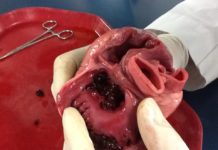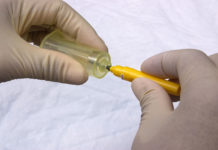
New light device uses a combination of infrared, red and ultraviolet light
University of Manchester and Salford Royal NHS Trust scientists have developed a lamp which could treat chronic ulcers with light. The lamp built by the team has 32 different bulbs which emit infrared, red or ultraviolet light.
The Arthritis Research UK funded trial led by Dr Michael Hughes tested the therapy – which combines infrared, red and ultraviolet light – on finger ulcers caused by a condition called systemic sclerosis. In people who have it, the immune system attacks the body’s fingers and toes.
The device could be a game changer for the treatment for other chronic ulcers, including diabetic and venous ulcers. Healing of chronic ulcers is a huge problem for millions of patients worldwide.
There was an average 83 per cent improvement in the ulcers, with no side-effects
Diabetic ulcers are a complication of long standing diabetes. Ulcers or open wounds in people with diabetes are difficult to heal because of poor circulation, while venous ulcers occur when blood doesn’t flow from the lower legs back to the heart, causing a build-up of pressure in the veins.
Eight patients with 14 ulcers between them underwent treatment with this new light device. The patients were treated using the lamp for 15-minute sessions, twice a week for three weeks.
There was an average 83 per cent improvement in the ulcers, with no side-effects.
Scientists believe ultraviolet light, which cannot be seen by the naked eye, kill the bacteria and reduce the inflammation that prevents healing. Red light is believed to boost blood circulation, increasing the supply of oxygen and nutrients needed for wound healing and also stimulate the production of the protein collagen in the skin which helps new tissue grow. Infrared light is associated with increasing blood flow and oxygen.
“We believe this technology is a game changer; the implications are huge. But this technology is cheap and practical- it’s really a no brainer as it can be administered at home. There are future possibilities as well: we think this device could be easily adapted to monitor ulcers remotely using cameras. They could also be programmed to recognise different parts of the body so that the treatment is given accurately,” added Dr Hughes.
The study was published in the Journal of Dermatological Treatment.








